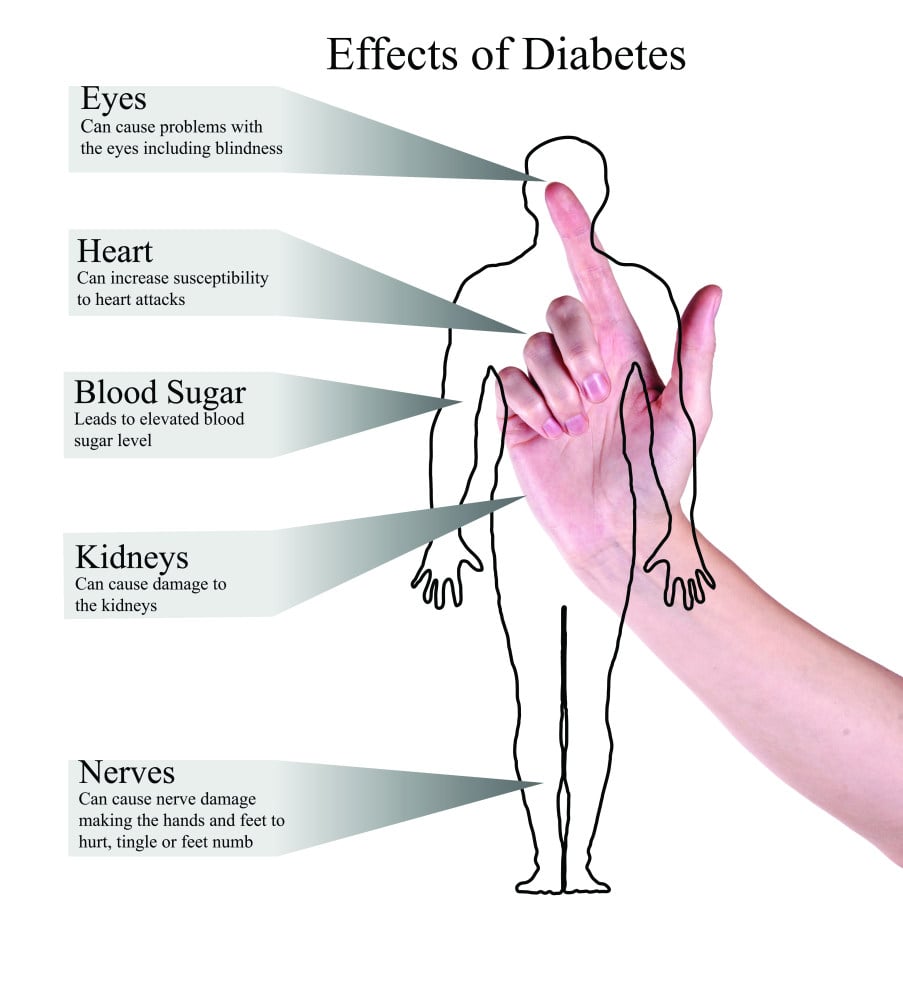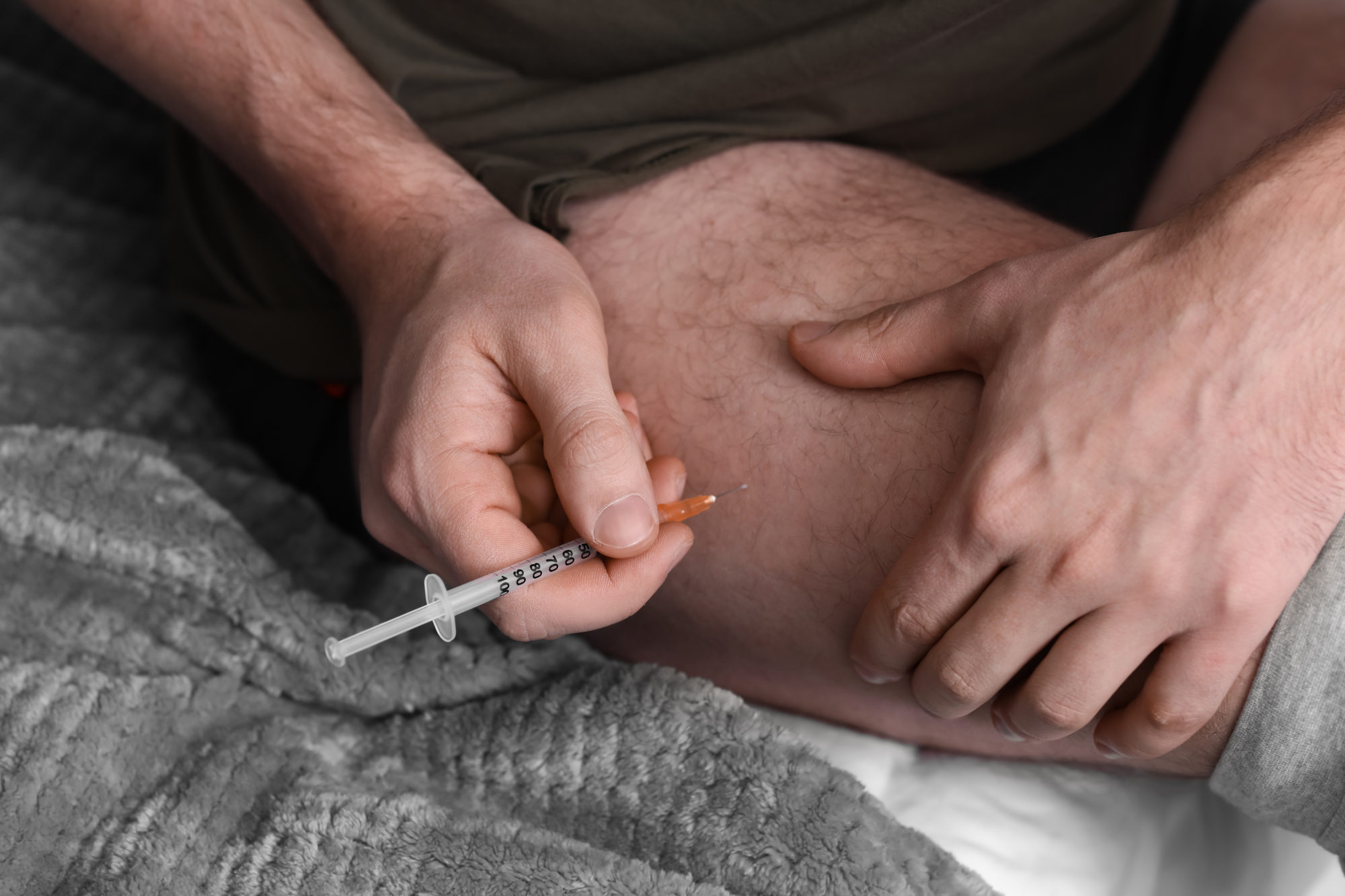
Explainer | World Diabetes Day 2021: trillion-dollar-a-year disease whose most common form is preventable if you exercise, eat a healthy diet and avoid weight gain
- One in 10 adults has diabetes, mostly Type 2 that’s preventable if you eat a healthy diet, exercise, watch your weight and be alert to pre-diabetes symptoms
- Diabetes occurs when the body produces too little insulin, needed to process sugar. After scary symptoms, Monique Baronet learned she had Type 1 diabetes at 21
You probably know someone with this disease; you may even have it yourself: diabetes.
This remarkably, frighteningly common condition is a new kind of pandemic, affecting one in 10 adults worldwide. The International Diabetes Federation expects the number to rise 11 per cent by 2030.
Already it contributes hugely to global health costs: an estimated US$966 billion this year.
The US Centres for Disease Control describes diabetes as a chronic condition that affects how our bodies turn food into energy. What we consume is broken down into glucose (a simple sugar) and released into the bloodstream. The pancreas manages insulin, which regulates blood sugar levels.
If you have diabetes, this system is hijacked: either your body doesn’t make enough insulin or cannot use that insulin effectively.

It is normally diagnosed at three major growth spurts of life, at ages seven, 14 and 21. It’s a young people’s disease, often has a genetic component and rarely affects people older than 30 for the first time.
The pancreas: how it works, why it matters and how to keep it healthy
The pancreas can’t keep up with the high blood sugar levels that usually result from poor diet and lack of exercise. Some people have “insulin resistance” – the pancreas produces insulin but the body doesn’t recognise it.
There are other types of the illness, says Dr Francis Chow, chairman and managing director of the Hong Kong Diabetes Specialist Centre – but they affect smaller populations.
For example, pregnant women may have gestational diabetes; diabetes may develop from diseases of the pancreas, such as cystic fibrosis; and there is drug-induced diabetes.

Francis Chow says Type 2 diabetes is a progressive disease, with a pre-diabetes phase that can present with a slew of symptoms including blurry vision, cold hands and feet, and itchy skin among others, as much as 10 years before a full-blown diabetes diagnosis.
How do you know you’ve got it?
The incidence of type 2 diabetes is increasing in many countries, coinciding with rising rates of obesity.
First, she noticed she was urinating frequently and copiously: “It felt as if I was forever on the toilet.” Then came an insatiable thirst: “I was always, always thirsty; I started to panic if I didn’t have a litre of water at hand at all times.”
Then she began to eat much more than she normally would – but started to lose weight instead of gaining. She was eating five meals a day and drinking litres of Coca Cola and still losing. “I wasn’t able to absorb any of the glucose in my food, it was just running out in my urine.”
She remembers “the final straw … when my periods stopped”. Her gynaecologist “knew straight away, from the symptoms I described, that I had diabetes”. Healthy sugar levels are normally between four and six; Baronet’s was 36. “He said he didn’t know how I wasn’t in a coma.”

Ivan Chow explains why this was a risk for Baronet.
“Diabetic ketoacidosis (DKA) is a serious condition that can lead to coma, even death. Normally, the body gets energy by breaking down sugar. When the body is unable to use sugar due to insulin deficiency, it burns fat as a source of energy, which produces ketones [a type of chemical].
“When ketones build up in the blood, they become toxic. It can happen to people with either type 1 or type 2 diabetes, but it is more likely to affect people with type 1.”

People with diabetes, whether Type 1 or 2, run the risk of serious side effects if their diagnoses are not managed: not just DKA but also heart attacks, strokes, kidney problems, blindness, loss of feeling in hands and feet, and potential amputation if diabetic neuropathy – nerve damage – develops.
Baronet’s weight loss – she shed 6kg rapidly – was one of the markers of her Type 1; Type 2 is all about weight gain. Ivan Chow elaborates: “The incidence of type 2 diabetes is increasing in many countries, coinciding with rising rates of obesity.” Teenagers are at the same risk as adults.
He says that, while sufferers of Type 1 diabetes cannot avoid their diagnosis “because Type 1 is an autoimmune disease”, we can all avoid Type 2 diabetes.
Asia’s lax attitude towards diabetes revealed in new surveys
Both doctors urge people to watch their weight – and watch it throughout your life. Indeed, weight is such a significant contributor to this illness that people with Type 2 can come off medication if they get their weight under control with lifestyle management.
“The risk is a function of the age of onset and the duration of obesity, and weight gain during adult life. This demonstrates the importance of preventing weight gain in all ranges. The prevalence of overweight and obesity among children and adolescents aged five to 19 has risen dramatically from just four per cent in 1975 to just over 18 per cent in 2016, and a rise in diabetes prevalence is expected and is worrying.”

A healthy diet and plenty of exercise are most important, he adds. “Lifestyle modifications can be very effective at avoiding or keeping diabetes under control and avoiding disease progression to long-term complications. Small changes can lead to improvements, including a decreased need for medication.”
Baronet manages her Type 1 diabetes with four daily injections that give her “more flexibility in daily life and the foods I can eat”.
“I started with two a day, but that meant an extremely strict regime. I had to inject at 12-hourly intervals, and in between I would have to really watch what I ate and bring my blood sugar down by exercise and drinking water. There was no room for social meals.

“I swam 50 lengths of a 20-metre [66 feet] pool every day. I had my diabetes completely under control within a year.”
She then developed thyrotoxicosis – excess thyroid hormone – which happens in 20 per cent of diabetics. She rapidly lost weight and spent another year trying to control both conditions. She was able to stop taking medicine for the thyroid, although she has to monitor it constantly.
Francis Chow is concerned about the rise in diabetes cases, especially as one in five new cases occurs in people under 40. “One in six Hong Kong diabetics have rapid decline in renal [kidney] function – every year there are more than 1,200 new dialysis patients – 60 per cent due to diabetes,” he adds.
47pc in China have diabetes or are likely to suffer from it, study finds
There is active research into preventing Type 1 diabetes and new ideas on smart insulin and even artificial pancreases, for example. A weekly extra-long-lasting insulin injection that may minimise the number of injections and reduce the risk of hypoglycaemia (low blood sugar) could be available within the next two years, he adds.

Living with Type 1 diabetes
If you or a young member of your family is diagnosed with Type 1 diabetes, Baronet gives the following advice.
“Take time to understand your body and how it works with diabetes, get control of your sugar levels and your weight early on and maintain it. It is so easy to forget about the long-term side effects when you are young and feel well.

“Diabetes is a disease that some career paths do not accept; for instance, I thought about working on a cruise ship but they wouldn’t consider me with my condition. But don’t let that stop you finding a different and often more satisfying career path. It is a manageable disease but do just that, manage it, be selfish for your own health.”
Baronet says her Type 1 diabletes “is a constant reminder to try and live a healthy lifestyle”. She eats well, she exercises and she is always mindful of her immunity. “I hope this is enough to enjoy a life without any complications in the future.”

